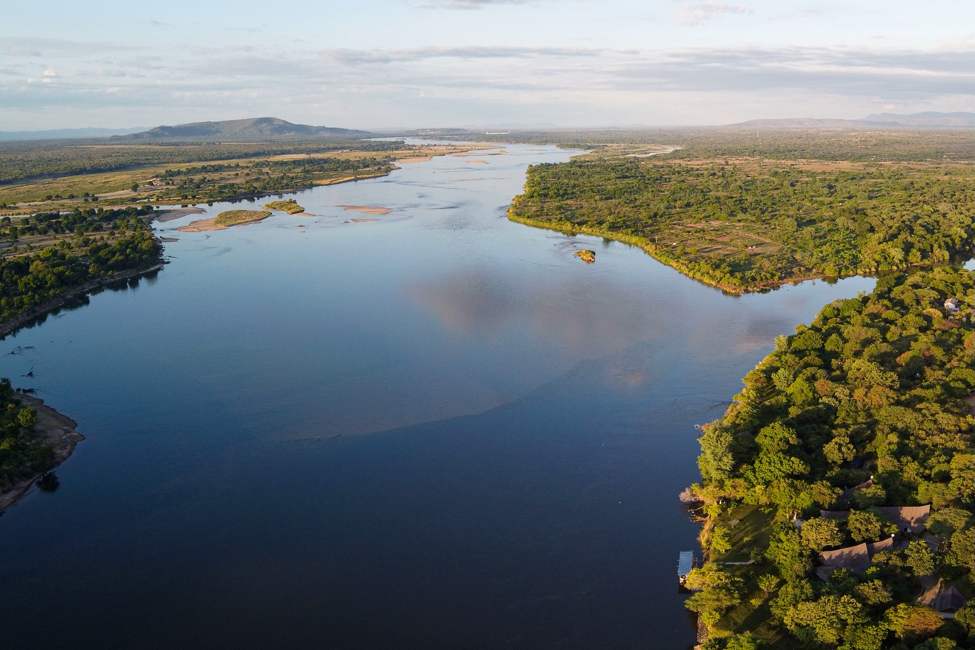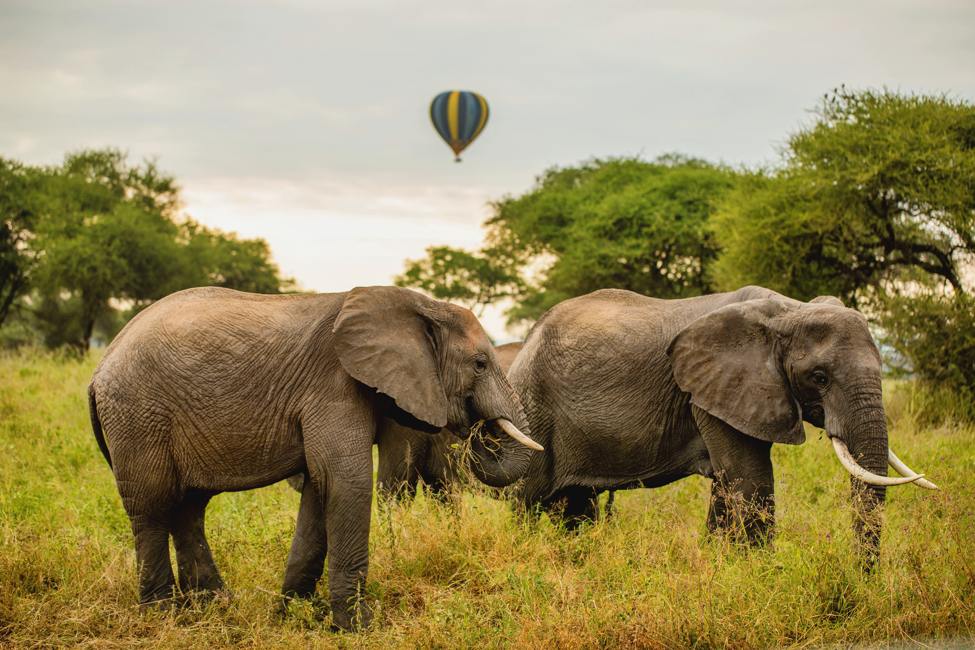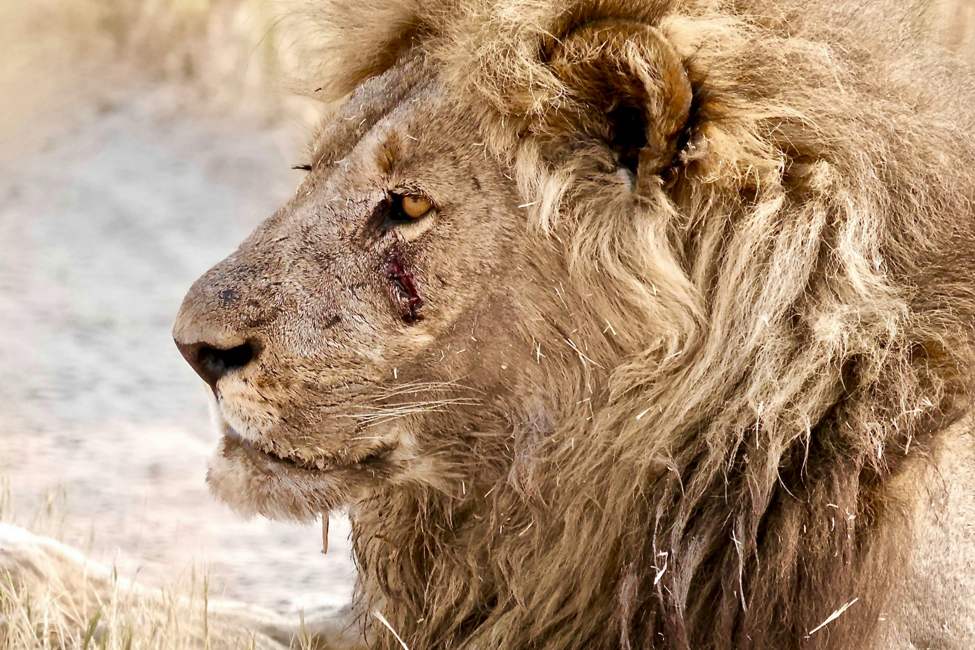Mount Bigugu in Nyungwe National Park. Photo by Ph. Nyirimihigo.
Our 5 Top Things to Do in Nyungwe National Park
To see one of Africa’s best-preserved rainforests, look no further than Nyungwe Forest. Set in the rolling hills of southwestern Rwanda and protected by a national park, it is home to a unique combination of wildlife found nowhere else. Here, you can track endangered Eastern chimpanzees, spend time among some of the world’s largest troops of black-and-white colobus monkeys, and find another 11 monkey species, including the visually striking l’Hoest monkey. And bird species number more than 300!
Thanks to this biological diversity, Nyungwe National Park was named a World Heritage Site in 2023 by the United Nations Educational, Scientific and Cultural Organization (UNESCO). The park’s 393 square miles host more than 1,000 plant species, including 200 types of trees, the magnificent giant lobelia, and a host of beautiful orchids. Dozens and dozens of butterfly species bring additional color to the landscape, along with dragonflies and damselflies.
Keep reading to learn our five favorite ways to explore Nyungwe National Park.
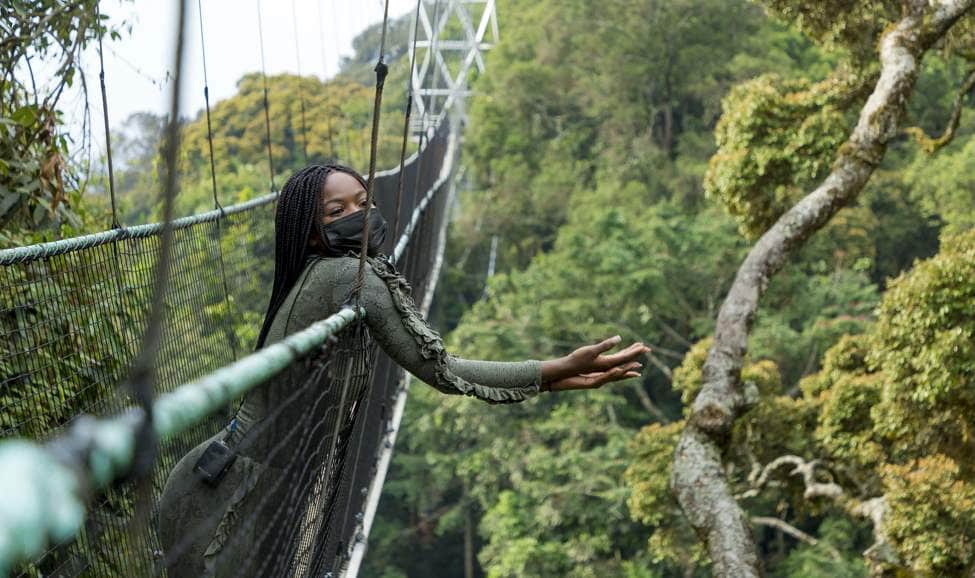
British choreographer Sherrie Silver enjoyed the canopy walk on a 2020 visit to Nyungwe National Park. Photo by Visit Rwanda.
Canopy Walk
In any rainforest, the treetops teem with fascinating wildlife—and you can see some of it on a guided walk across Nyungwe Forest’s Canopy Walkway. You’ll get an idea of what the monkeys and birds see each day as you take a ramp past the treetops and step onto a suspension bridge 200 feet above the forest floor. From here, you’ll get views over the vast greenery and into the Democratic Republic of the Congo.
Guided canopy walks last around two hours total, with a 30- to 45-minute walk on the Igishigishigi trail to the bridge, time on the bridge, and a walk back.
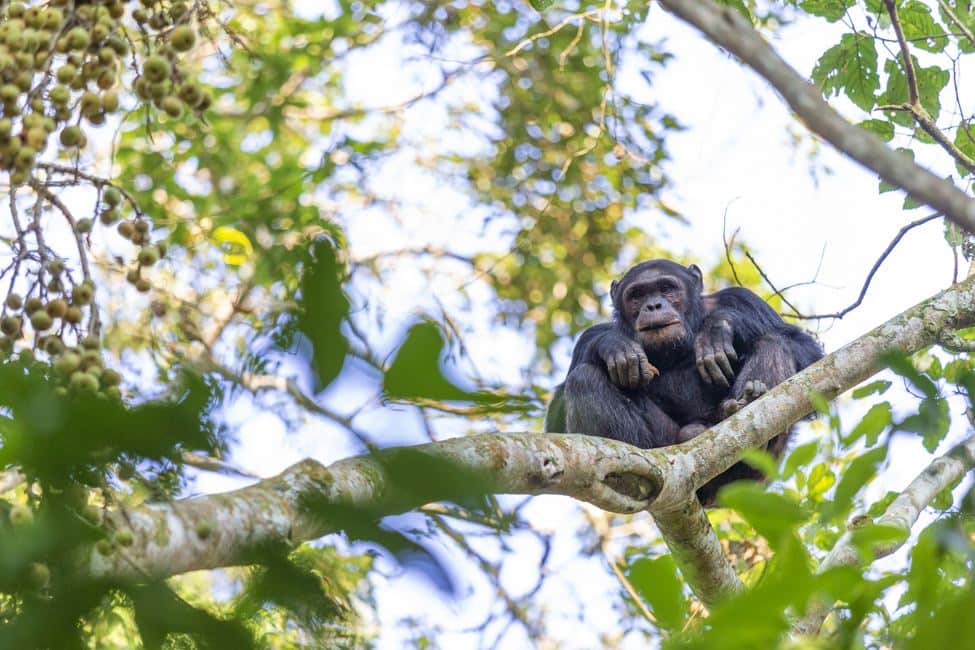
A chimpanzee looks down from a fruiting fig tree in Nyungwe National Park.
Chimp Trekking
Nyungwe National Park hosts most of Rwanda’s last-remaining chimps, with the rest living in Gishwati-Mukura Forest National Park. The population here numbers around 100, concentrating in a 7.5-square-mile remnant forest known as Cyamudongo Forest. While accidental sightings are possible, we recommend a dedicated chimp trek for travelers wanting to see these close evolutionary cousins.
Chimps are fast-moving and, unlike mountain gorillas, tend not to hang around in a single place for hours. So be prepared for a brisk hike of several hours over varied terrain as you look for your chimp group, usually off the main trails. Once you catch up with them, you have an hour to watch them—but don’t expect to sit on your laurels for that hour. The chimps will likely be moving quickly through the trees as they forage for food and socialize.
Your best chance of sightings is from June to August, when one of their favorite sources of food—the fig tree—comes into fruit. Stuffed with food, the chimps don’t tend to move quite as fast. Other animals that may be seen on a chimp trek include blue, vervet, and crowned monkeys, as well as birds like the blue-headed sunbird, the eastern mountain greenbul, and the dwarf honeyguide.
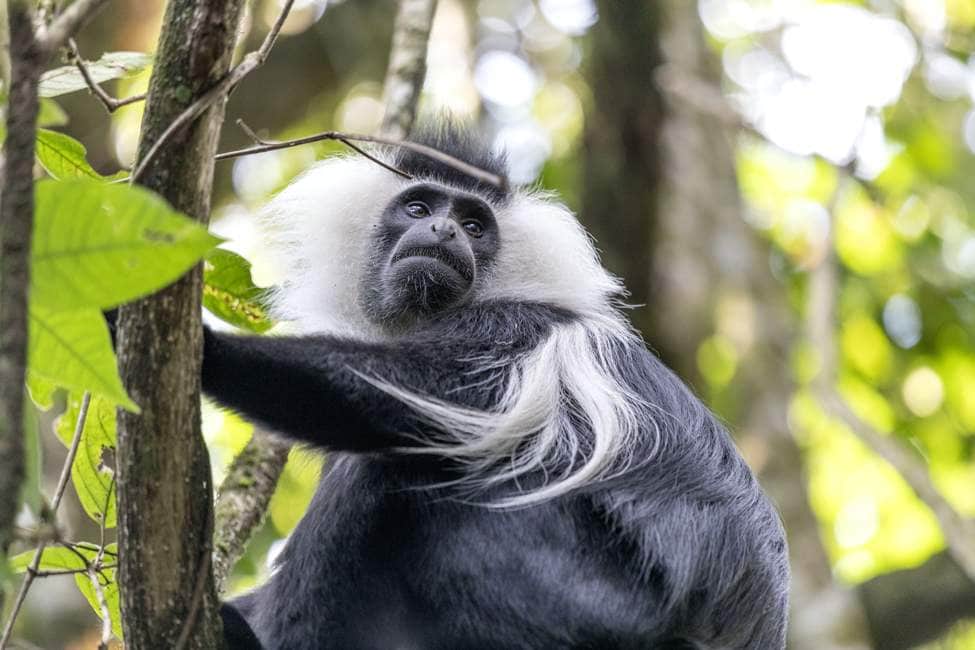
The colobus monkeys of Nyungwe National Park have beautiful black-and-white fur.
Colobus monkey-tracking
The colobus monkeys in Nyungwe are striking animals with a mostly black coat, broken by a halo of long white fur around their face and shoulders and on their tails. While most colobus live in troops of up to a dozen members, the troops in Nyungwe number in the hundreds! This peculiarity has made these monkeys world-famous. It also makes the chances of finding them on a guided colobus walk fairly high—it’s easier to spot a large group of monkeys than a solitary one.
The particular type of colobus in Nyungwe is the Rwenzori colobus, a subspecies of Angolan black-and-white colobus. Colobus walks are much less intense than chimp treks. They typically involve a relaxed walk of fifteen minutes to an hour until a troop is found. Once there, you have an hour to watch their acrobatics and playful interactions.
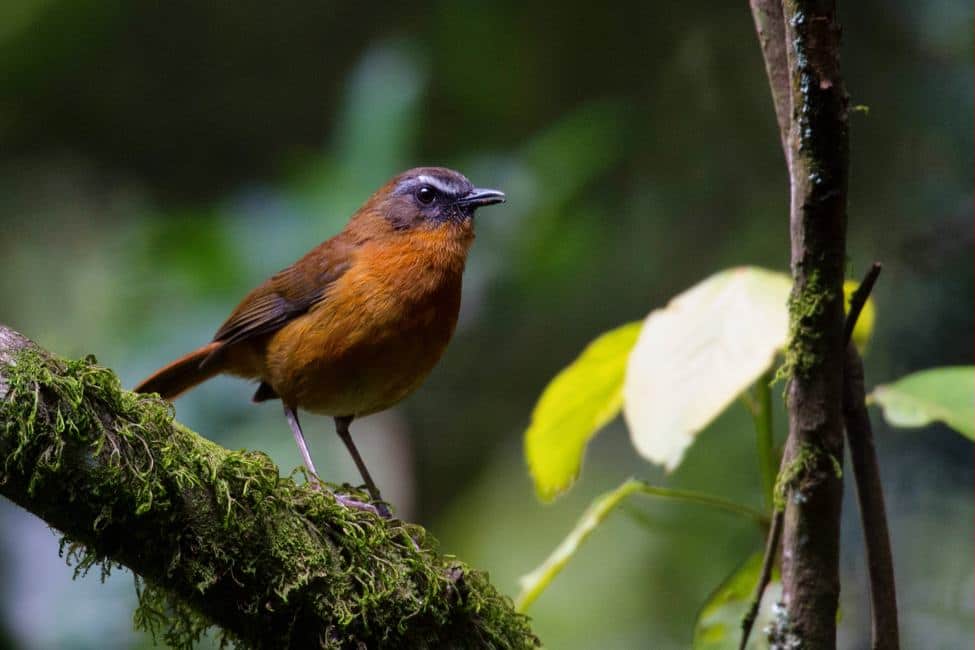
Archer’s robin-chats are commonly seen in Nyungwe National Park. Photo by G.R. van de Weghe.
Birdwatching
Nyungwe Forest is among Rwanda’s top birding hotspots. Boasting an impressive array of birdlife, the forest is home to 317 avian species, including 26 species that only occur in the Albertine Rift and 121 specialized forest species.
Finding these flying jewels in the dense canopy can be a challenge, so birders seeking to add to their life lists should book one of the park’s expert birding guides. Many lodges also offer guided birdwatching on the edge of the park and in the surrounding tea plantations. As in most places, early mornings and late afternoons are the best time to look for our feathered friends.
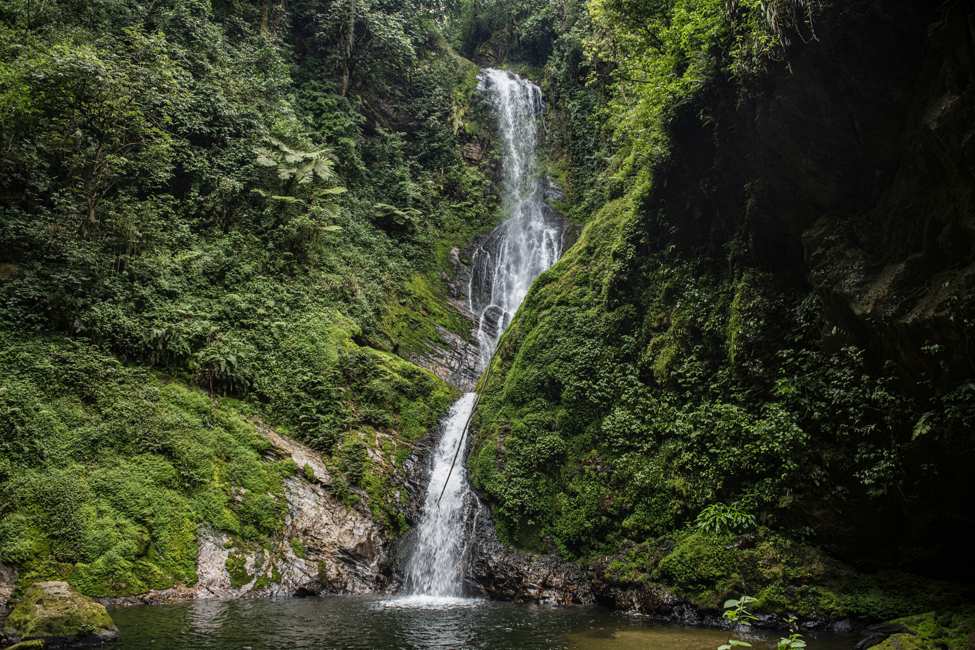
Nyungwe National Park is home to several beautiful waterfalls. Photo by G.R. van de Weghe.
Hiking
With fifteen well-maintained trails, gorgeous scenery, and a number of dramatic waterfalls to be found deep in the forest, Nyungwe is a hiker’s dream. One trail through the park is a section of the longer Congo-Nile Trail, a 141-mile hike-bike trail along the shores of Lake Kivu, one of the African Great Lakes.
Since trails are unmarked, all hikes are guided by park staff. They range from easy 1-hour hikes to a full day of exploration. For waterfall lovers, we recommend the Isumo trail, where you can see Nyungwe’s biggest waterfall, about 55 feet in height. Beautiful plumes of mist rise above the rocky river, surrounded by ferns, birds, and butterflies.
On longer hikes, hire a porter to carry your water and snacks and help you over uneven terrain. This allows you to devote more of your energy to walking, while providing an important source of income to local families.
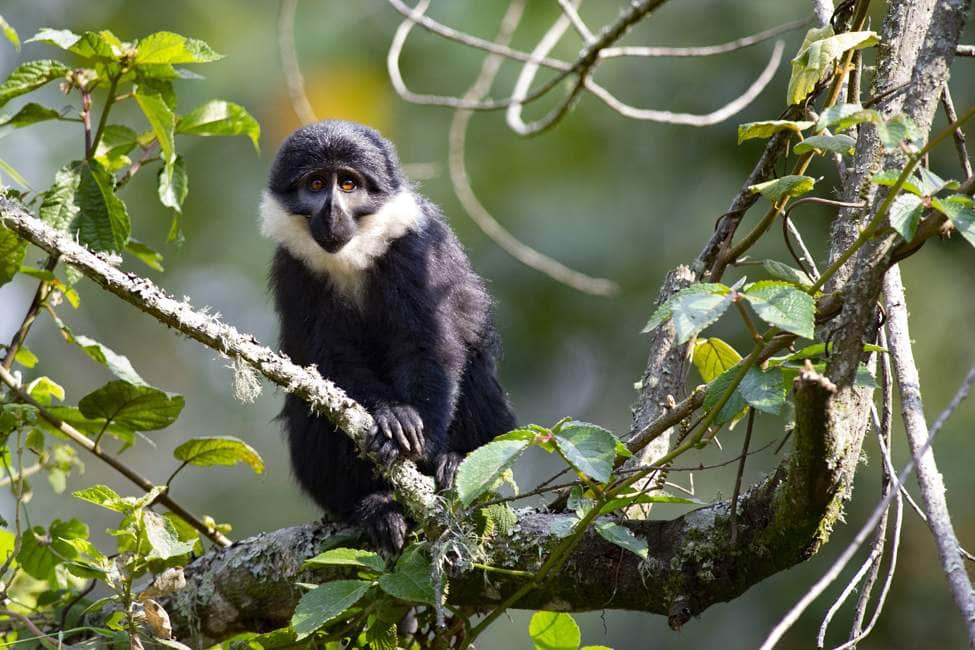
The l’Hoest’s monkey is one of 13 primate species that live in Nyungwe Forest. Photo by G.R. van de Weghe.
Visiting Nyungwe
Nyungwe is about a 4- to 5-hour drive from Rwanda’s capital, Kigali, on paved roads. On the way, you can stop in Nyanza to see the palace of King Mutara III Rudahigwa, one of the last kings of Rwanda. Another great place to take a break is the Ethnographic Museum in Butare, which displays art and historical artifacts from Rwanda’s pre-colonial period.
If you’re in a hurry, you can fly into Kabembe International Airport, which is about 20 miles from the park.
To get an idea of what a Rwandan safari with a visit to Nyungwe could include, view these sample itineraries:
- 9-Day Primates, Birds, and More! Rwanda Safari—See gorillas, chimps, monkeys, and more on this Rwandan safari to two of the nation’s most primate-rich forests: Volcanoes National Park and Nyungwe Forest.
- 12-Day Rwanda Treasures Safari—This safari includes Rwanda’s three main national parks: Nyungwe, Volcanoes, and Akagera. You’ll explore rolling green mountains, shimmering lakes, and golden savanna, and get a chance to see everything from gorillas to the Big 5.
To make your safari dreams come true, contact Ujuzi today!
Sign up for the Ujuzi Newsletter!
From top travel tips to innovative safaris and conservation movement, get inspired to plan your next African safari!


